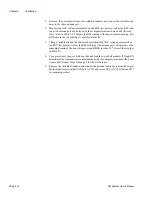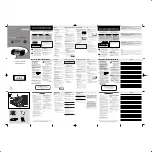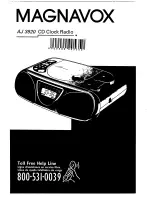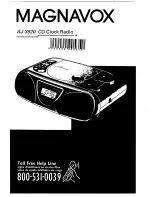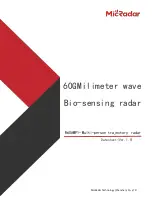
Chapter 6 Maintenance
Page 6-8
7/23/03
CM 100Base-T System User’s Manual
alarm, suspect the MUX.
A module reporting failure is not always the defective unit. In some cases, a failure in an
upstream module may be reported by a downstream module.
Examine alarm detail for each module in alarm. This gives a good indication of the
failure. Once the failed module has been identified, replace it with a known good unit.
Checking Alarm Logs
As an alarm occurs, the ACU assigns the alarm a number and adds it to the alarm log.
The first alarm is number 00000. The log stores the last 512 alarms but numbering
continues consecutively to 65535 then starts over at 00000.
NOTE:
ACU reset or power cycle also causes the alarm numbering to reset and drops current en-
tries from the log.
To check the alarm log, perform the following steps from the QuikLink main menu.
1.
Select Alarm and Status (020) and press <Enter>.
2.
Select System (021) and press <Enter>.
3.
Select Alarm Log (038) and press <Enter>.
4.
Select Alarm Report (039) and press <Enter>.
Refer to Appendix D, the Alarm Codes Table, for a list of CM alarm codes and
definitions.
Viewing Statistics
To examine radio performance, complete the following steps from the QuikLink main
menu.
1.
Select Performance Monitoring (003) and press <Enter>.
2.
Select View Statistics (004) and press <Enter>.
3.
Use the up and down arrow keys to view the screens.
Displayed statistics are:
BER
– A representative of the bit error rate being delivered to the user.
Errored Seconds
– A second with one or more bit errors (parity).
Severely Errored Seconds
– Any second with parity error rate greater than 10
-3
for the
complete second.
Frame Loss Seconds
– Any second with a frame loss.
To reset statistics, perform the following steps from the main menu.
1.
Select Performance Monitoring (003) and press <Enter>.
2.
Select Reset Statistics (006) and press <Enter>.
3.
Choose whether you want to reset side A, side B, or both sides.
To view real-time measurements of radio parameters on the radio, perform the following
steps from the main menu.
1.
Select Performance Monitoring (003) and press <Enter>.
Summary of Contents for CM7
Page 2: ......
Page 4: ...Page iv 5 04 05 CM7 8 100Base T System User s Manual ...
Page 16: ...Glossary Page xvi CM System Users Manual X Y Z ...
Page 24: ...Microwave Networks CM7 8 100Base T System User s Manual Pagexxiv ...
Page 62: ...Chapter 2 Operation Page 2 18 5 02 05 CM 100Base T System User s Manual ...
Page 64: ...Chapter 3 Module Descriptions Page 3 2 CM7 8 100Base T ...
Page 88: ...Section 3 3 Transmitter Unit Page 3 3 6 CM7 8 System User s Manual ...
Page 96: ...Section 3 5 RF Power Supply Unit Page 3 5 4 CM System User s Manual ...
Page 100: ...Section 3 6 SP Power Supply Unit Page 3 6 4 CM System User s Manual ...
Page 106: ...Section 3 7 Alarm and Control Unit Page 3 7 6 11 18 03 CM 100Base T System User s Manual ...
Page 124: ...Section 3 11 SYNDES Page 3 11 6 CM System User s Manual ...
Page 130: ...Section 3 12 SCU Page 3 12 6 11 18 03 CM 100Base T System User s Manual ...
Page 138: ...Section 3 13 OWU Page 3 13 8 CM System User s Manual ...
Page 150: ...Section 3 15 NMU Page 3 15 6 CM System User s Manual ...
Page 192: ...Chapter 5 Verification Page 5 20 CM System User s Manual ...
Page 194: ...Chapter 6 Maintenance Page 6 2 7 23 03 CM 100Base T System User s Manual ...
Page 224: ...Chapter 6 Maintenance Page 6 32 7 23 03 CM 100Base T System User s Manual ...
Page 226: ...Site Engineering Page 2 CM System User s Manual ...
Page 230: ...Appendix A T I Curves Page A 4 CM7 8 100Base T System User s Manual ...
Page 267: ...Microwave Networks CM System User s Manual PageB 37 ...
Page 268: ...Appendix B QuikLink Page B 38 CM System User s Manual ...
Page 282: ...Appendix D Alarm Codes Page D 6 5 02 05 CM 100Base T System User s Manual ...
Page 290: ...Appendix E Setting Frequency Page E 8 CM7 8 System User s Manual ...
Page 312: ...CM7 8 100Base T System User s Manual Page I 4 Microwave Networks ...

